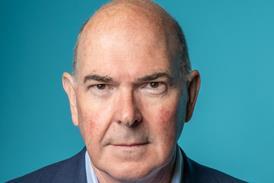I am going to run a marathon in the Arctic on 24th October 2009. It’s the “one mad thing I’m going to do” before my milestone 50th birthday in January 2010. It is a big undertaking: 42 kilometres through tundra and arctic desert, in temperatures as low as -15, partially on the polar ice cap. I have only two goals: to complete the course in less than seven hours and to get to 24th October without any training injuries.
The training experience makes me reflect on the psychology of large scale change. I know that I can do it but my preparation must be focused and disciplined. It helps that I have a fantastic running trainer, Jon Bell. When Jon says something like “you need to reduce your time per mile by 30 seconds and maintain that pace for five hours in order to achieve your goal” my heart sinks. I question whether I will ever attain that running standard and even doubt my judgement in entering the race. Yet when he says to me “you are really improving, 20 seconds a mile faster than our last session”, I feel so motivated that I could take on Paula Radcliffe.
The same principles apply when engaging people in organisational change. In Rules for Radicals (1971), Saul Alinsky said: “A new idea must be at the least couched in the language of past ideas; often, it must be, at first, diluted with vestiges of the past.” What this means is that people are much more likely to embrace change if it’s presented as something that builds positively on what they are familiar with than as something that seems far away and unachievable.
Nearly 40 years later, McKinsey researchers Leslie, Loch and Schaninger have reached similar conclusions. They say that if we start change from what people are used to (from what they call it “the organisational legacy”) it is likely to motivate them to improve far more than other things that people think of as performance incentives such as key performance indicators or “stick and carrot” approaches.
There is some important learning here in how we engage staff to bridge the looming financial gap in the NHS. The size of the challenge is so large and so unprecedented that it can seem overwhelming or unachievable. We should frame our change strategy as building on what people do already, helping each person to understand what they need to do to improve their current work.
We need to mobilise our entire workforce by getting them to do more of what they already do well rather than constantly reiterating the size of the gap. Paradoxically, we are more likely to create the transformational change we seek by positioning it as an incremental journey from the present than through burning platforms or bold statements about radical change. Just like my running…..




















![Wendy Korthuis-Smith[2]](https://d3e6tmgg461bic.cloudfront.net/Pictures/100x67/7/6/4/3063764_wendykorthuissmith2_965497_crop.jpg)





5 Readers' comments